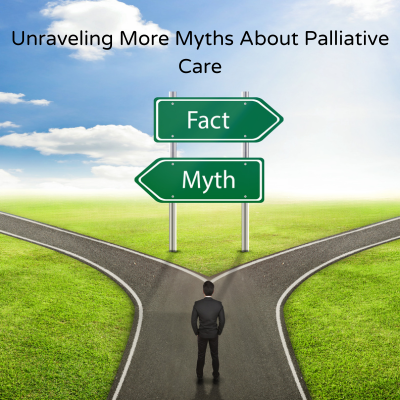Don’t Believe What You Hear: Unravelling More Myths About Palliative Care

Palliative care has been around for a while, providing aid and support to patients with life-limiting or life-threatening illnesses or conditions. The sad truth is that while it offers several benefits for patients and their families, globally, only 14% of the people who need it receive it, according to the WHO (2020). In India, less than 4% of people who need it have access to palliative care. Several barriers – which vary globally – prevent patients from accessing the care they need. However, in several circumstances, it boils down to a lack of awareness, socio-cultural beliefs attached to death, lack of access to pain relief medicines, and misconceptions that dim its value in the eyes of those who need it most.
There is much to be done worldwide to increase accessibility and awareness, but let’s see if we can pull back the veil on a myth or two.
Read: Overwriting Misconceptions About Palliative Care
Palliative Care & Accessibility
One of the beliefs about palliative care is that only a physician can refer or recommend a patient for palliative care. Not true. A patient or family member can independently reach out to a service or organization. Information and contact details for the same can easily be found online by clicking on this link. It is important to note that palliative care involves various services that help patients improve their quality of life in spite of illness and can be availed while regular treatments are still on. The goal remains to help make the journey easier and less stressful, irrespective of the destination.
Palliative Care & Death
Among the harsher myths about palliative care is that it hastens death. And a myth it is. Palliative care is an approach that focuses on helping patients live the best quality of life and supporting their families from the diagnosis until they recover or sadly pass on. While fingers are often pointed at morphine and similar medications used to help alleviate pain, they can alleviate much of the suffering when monitored and administered in controlled doses and with adequate training.
Much of this association stems from the fact that palliative care and hospice care are often misinterpreted as the same. Adding to this is the belief that it is mainly for terminal cancer patients. Firstly, palliative care and hospice care are distinct healthcare approaches, and the former can be included in a healthcare plan at any point in the journey. Secondly, palliative care is not exclusive to those with cancer; it is available for anyone dealing with a severe illness or condition, including congestive heart failure (CHF), different types of cancer, chronic obstructive pulmonary disease (COPD), kidney disease, Alzheimer’s, Parkinson’s and Amyotrophic Lateral Sclerosis (ALS).
Easing The Struggle
The sad truth is that sometimes, no matter how hard we fight, illnesses compromise lives. The best thing we can do for ourselves and our loved ones is to grasp every opportunity available to stay strong, make the treatment journey, be more comfortable, and live with dignity until the end. So, let’s open our minds and embrace what palliative care can do for us.
Stay tuned for more mythbusters as we try to break down the misconceptions about palliative care and offer insight into its value.





